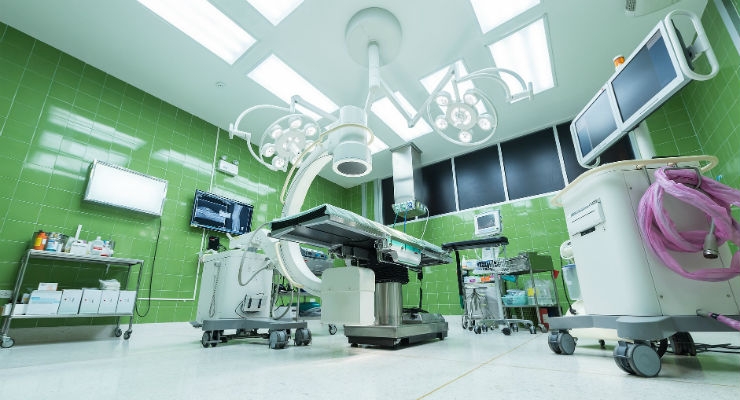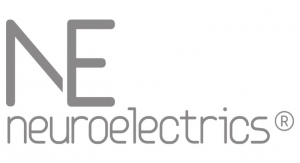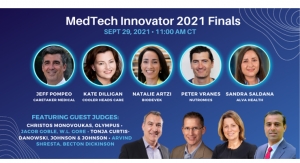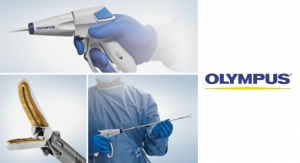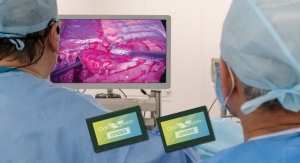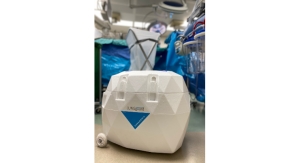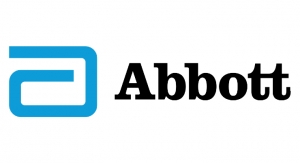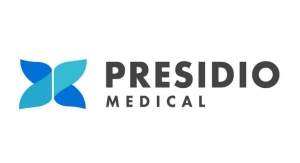Lars Thording, VP—Marketing & Public Affairs, Innovative Health04.17.18
Many experts predict that the global medical device reprocessing market will grow at a compound annual growth rate (CAGR) of 14.9 percent from 2017 to 2024. This is significant for two reasons. First, such massive growth in reprocessing corresponds (almost 1:1) with increased savings for hospitals and surgery centers. Reprocessors typically charge about 50 percent of each device’s original price; if the reprocessor’s revenue increases by 20 percent, the hospital is saving an equal amount. Second, reprocessing growth means more devices are re-used, and every time a single-use device (SUD) is re-used, the original manufacturer loses the sale of a device. The predicted level of growth in reprocessing cannot be ignored by the original manufacturer, and they have, indeed, launched a strategic and technological defense campaign to contain the growth of the reprocessing market.
But, before we go there, let us take a closer look at the “tailwinds” for reprocessing—the reasons why such large growth is anticipated. Foundationally, over the past 15 to 20 years, reprocessing has evolved through FDA regulation and industry knowledge from a shady, hospital-based activity that arguably put patient safety at risk to a highly professionalized activity, openly pursued by hospitals. Hospitals have discovered the substantial level of savings driven by reprocessing can become a key supply chain strategy that uniquely reduces costs without sacrificing quality. This seemingly impossible goal is achieved when reprocessors can demonstrate substantial equivalence to original devices, and have this sanctioned by FDA clearances.
But that’s not all. A perfect storm is brewing for the industry from the confluence of several tailwinds: increasing cost pressure on hospitals, increasing awareness of environmental waste from SUDs, and rapid procedure growth in exactly the service lines where reprocessing has the biggest financial impact. The cardiology reprocessing market is expected to grow rapidly—specifically electrophysiology (EP) mapping and ablation (A-Fib and similar) procedures are expected to double between 2015 and 2024 and the device market value will grow by even more.
As a result, the tailwinds are blowing strong (especially cardiology reprocessing) and the prospect for hospitals and EP Labs seems rosy. With this confluence of tailwinds, why wouldn’t cardiology reprocessing grow at the rapid pace predicted by experts? In fact, it won’t grow this fast unless the hospital sector and the reprocessing industry answers some key challenges.
Understanding the Barriers to Reprocessing Growth
Before we get into a detailed explanation of these issues, it helps to first understand the fundamentals of reprocessing. It begins of course when the original manufacturer develops a new device, gets FDA clearance to market it and start selling it to hospitals. Hospitals may then ask reprocessors to target a specific device due to its high cost. In response, reprocessors reverse engineer the device, determine how it can be cleaned and re-used, and get FDA clearance to sell the device again (sometimes three to four, or even more times).
So far, so good. But when original manufacturers—especially in high growth areas like EP—discover the “bleeding” in the form of lost revenue, they respond by inventing new technology and obsoleting the original device. The new device cannot be reprocessed right away, so the hospital purchasing this new device loses savings. This means constantly seeking new FDA clearances is critical for reprocessing savings. If the reprocessor does not achieve new clearances, savings gradually go down due to device lifecycles and planned obsolescence.
Investments in Research and Development Must Drive New FDA Clearances
And herein lies the subsequent problem: The largest reprocessors in the country have all but stopped getting new FDA clearances to sell reprocessed cardiology and EP devices. In fact, the two largest reprocessors—SterilMed (owned by Johnson & Johnson) and Stryker (previously Ascent)—have achieved only a total of four cardiology clearances since 2012 in a technology market where device lifecycles are arguably shorter than anywhere else. Certainly, some newer reprocessors are breaking records in getting new clearances, but the legacy players are not taking the regulatory steps to enable the predicted growth. Reprocessing won’t grow by 14.9 percent without new clearances. In fact, it won’t grow at all.
The original device manufacturers are creating headwinds as well. The prospect of a 14.9 percent CAGR for an industry where growth is equal to the manufacturers’ losses obviously produces a strong and deliberate response. Manufacturers have always tried to curb the growth of reprocessing, however, there has never been more at stake than in the current debacle over cardiac/EP technology.
Shutting Down Restrictive Technology Innovations
In addition to speeding up the launch of new technologies, some original manufacturers effectively engage in restrictive technology innovation to prevent EP SUDs from being reprocessed. If “restrictive technology innovation” sounds like an oxymoron, it is because we all assume that technology innovation (like a new and improved diagnostic ultrasound catheter) has a net “good” effect, so how can it be “restrictive”? Technology innovation is restrictive when the incremental clinical or technical improvement is offset by financial consequences that reduce global clinical or technical value.
For example, consider a diagnostic ultrasound catheter with a small clinical improvement that is also specifically designed with increased complexity, choice of material, or computer chips (that shut down the functionality of the device because it has been used before) to NOT be reprocessable. This catheter provides incremental technical improvement when used, however, at the same time, due to the higher cost of the new device plus the cost of not being able to reprocess it, reduces the hospital’s ability to provide overall quality care.
Restrictive technology innovation is already costing EP Labs across the country dearly, and recent new product launches have shown a more consistent commitment to restrict reprocessing. Simply put, the predicted growth in reprocessing is not going to happen until hospitals refuse to purchase devices designed with the primary goal of inhibiting reprocessing. If the reprocessing industry delivers on their responsibility to get new clearances and hospitals cease adopting these restrictive technologies, reprocessing definitely has the potential predicted.
Empowering Hospitals to Make Informed Purchasing Decisions
Given these issues, many hospitals may begin to decline the adoption of “new-and-improved” technology unless presented with evidence of significant clinical improvement. This in turn will be weighed against the total device cost and loss of reprocessing savings. The hospital’s responsibility is to provide quality care, NOT to adopt new technologies in a fragmented manner that leaves patient care worse off overall because the hospital’s financial solidity is impacted. To that end, device manufacturers should be prepared to promote greater transparency and work with hospitals consultatively, looking at the big picture of overall device spend, quality of care, and reprocessing savings.
There are device manufacturers that do not engage in restrictive technology innovation practices. Hospitals would benefit from aligning themselves with these organizations, so they get to own and control device utilization.
At the same time, for these forward-thinking device manufacturers, this is a great opportunity to become a participant in the projected reprocessing growth—to become part of the tailwind. The medical device manufacturer that incorporates considerations for reprocessability in device design and encourages the optimization of device utilization by supporting reprocessing will be able to grab market share and shorten new product adoption time.
Through these types of partnerships, the entire healthcare industry will make progress toward goals of improving quality of care and reducing overall costs, driving benefit not just to hospitals but also to the patients they serve and the device manufacturers that drive new technology solutions in healthcare.
But, before we go there, let us take a closer look at the “tailwinds” for reprocessing—the reasons why such large growth is anticipated. Foundationally, over the past 15 to 20 years, reprocessing has evolved through FDA regulation and industry knowledge from a shady, hospital-based activity that arguably put patient safety at risk to a highly professionalized activity, openly pursued by hospitals. Hospitals have discovered the substantial level of savings driven by reprocessing can become a key supply chain strategy that uniquely reduces costs without sacrificing quality. This seemingly impossible goal is achieved when reprocessors can demonstrate substantial equivalence to original devices, and have this sanctioned by FDA clearances.
But that’s not all. A perfect storm is brewing for the industry from the confluence of several tailwinds: increasing cost pressure on hospitals, increasing awareness of environmental waste from SUDs, and rapid procedure growth in exactly the service lines where reprocessing has the biggest financial impact. The cardiology reprocessing market is expected to grow rapidly—specifically electrophysiology (EP) mapping and ablation (A-Fib and similar) procedures are expected to double between 2015 and 2024 and the device market value will grow by even more.
As a result, the tailwinds are blowing strong (especially cardiology reprocessing) and the prospect for hospitals and EP Labs seems rosy. With this confluence of tailwinds, why wouldn’t cardiology reprocessing grow at the rapid pace predicted by experts? In fact, it won’t grow this fast unless the hospital sector and the reprocessing industry answers some key challenges.
Understanding the Barriers to Reprocessing Growth
Before we get into a detailed explanation of these issues, it helps to first understand the fundamentals of reprocessing. It begins of course when the original manufacturer develops a new device, gets FDA clearance to market it and start selling it to hospitals. Hospitals may then ask reprocessors to target a specific device due to its high cost. In response, reprocessors reverse engineer the device, determine how it can be cleaned and re-used, and get FDA clearance to sell the device again (sometimes three to four, or even more times).
So far, so good. But when original manufacturers—especially in high growth areas like EP—discover the “bleeding” in the form of lost revenue, they respond by inventing new technology and obsoleting the original device. The new device cannot be reprocessed right away, so the hospital purchasing this new device loses savings. This means constantly seeking new FDA clearances is critical for reprocessing savings. If the reprocessor does not achieve new clearances, savings gradually go down due to device lifecycles and planned obsolescence.
Investments in Research and Development Must Drive New FDA Clearances
And herein lies the subsequent problem: The largest reprocessors in the country have all but stopped getting new FDA clearances to sell reprocessed cardiology and EP devices. In fact, the two largest reprocessors—SterilMed (owned by Johnson & Johnson) and Stryker (previously Ascent)—have achieved only a total of four cardiology clearances since 2012 in a technology market where device lifecycles are arguably shorter than anywhere else. Certainly, some newer reprocessors are breaking records in getting new clearances, but the legacy players are not taking the regulatory steps to enable the predicted growth. Reprocessing won’t grow by 14.9 percent without new clearances. In fact, it won’t grow at all.
The original device manufacturers are creating headwinds as well. The prospect of a 14.9 percent CAGR for an industry where growth is equal to the manufacturers’ losses obviously produces a strong and deliberate response. Manufacturers have always tried to curb the growth of reprocessing, however, there has never been more at stake than in the current debacle over cardiac/EP technology.
Shutting Down Restrictive Technology Innovations
In addition to speeding up the launch of new technologies, some original manufacturers effectively engage in restrictive technology innovation to prevent EP SUDs from being reprocessed. If “restrictive technology innovation” sounds like an oxymoron, it is because we all assume that technology innovation (like a new and improved diagnostic ultrasound catheter) has a net “good” effect, so how can it be “restrictive”? Technology innovation is restrictive when the incremental clinical or technical improvement is offset by financial consequences that reduce global clinical or technical value.
For example, consider a diagnostic ultrasound catheter with a small clinical improvement that is also specifically designed with increased complexity, choice of material, or computer chips (that shut down the functionality of the device because it has been used before) to NOT be reprocessable. This catheter provides incremental technical improvement when used, however, at the same time, due to the higher cost of the new device plus the cost of not being able to reprocess it, reduces the hospital’s ability to provide overall quality care.
Restrictive technology innovation is already costing EP Labs across the country dearly, and recent new product launches have shown a more consistent commitment to restrict reprocessing. Simply put, the predicted growth in reprocessing is not going to happen until hospitals refuse to purchase devices designed with the primary goal of inhibiting reprocessing. If the reprocessing industry delivers on their responsibility to get new clearances and hospitals cease adopting these restrictive technologies, reprocessing definitely has the potential predicted.
Empowering Hospitals to Make Informed Purchasing Decisions
Given these issues, many hospitals may begin to decline the adoption of “new-and-improved” technology unless presented with evidence of significant clinical improvement. This in turn will be weighed against the total device cost and loss of reprocessing savings. The hospital’s responsibility is to provide quality care, NOT to adopt new technologies in a fragmented manner that leaves patient care worse off overall because the hospital’s financial solidity is impacted. To that end, device manufacturers should be prepared to promote greater transparency and work with hospitals consultatively, looking at the big picture of overall device spend, quality of care, and reprocessing savings.
There are device manufacturers that do not engage in restrictive technology innovation practices. Hospitals would benefit from aligning themselves with these organizations, so they get to own and control device utilization.
At the same time, for these forward-thinking device manufacturers, this is a great opportunity to become a participant in the projected reprocessing growth—to become part of the tailwind. The medical device manufacturer that incorporates considerations for reprocessability in device design and encourages the optimization of device utilization by supporting reprocessing will be able to grab market share and shorten new product adoption time.
Through these types of partnerships, the entire healthcare industry will make progress toward goals of improving quality of care and reducing overall costs, driving benefit not just to hospitals but also to the patients they serve and the device manufacturers that drive new technology solutions in healthcare.

